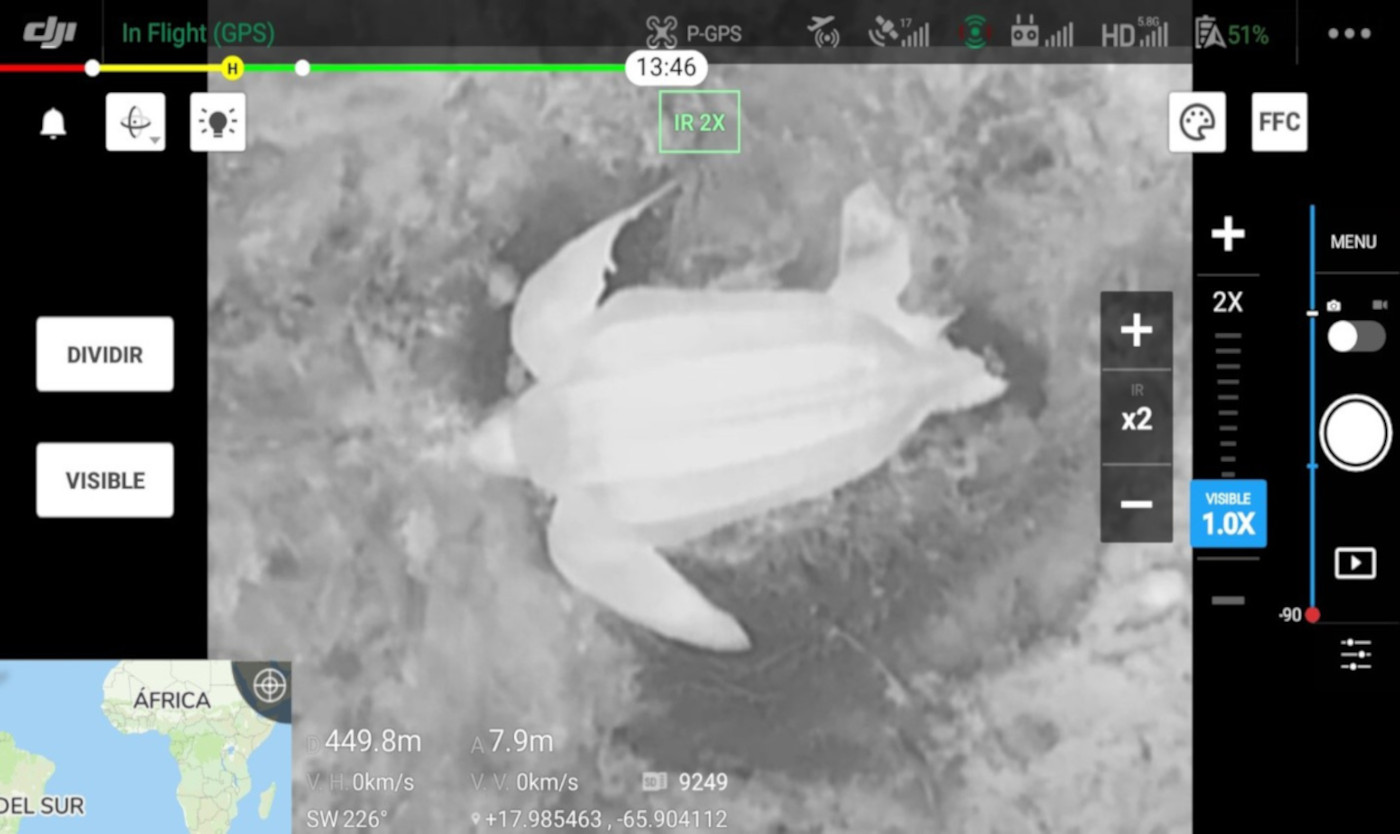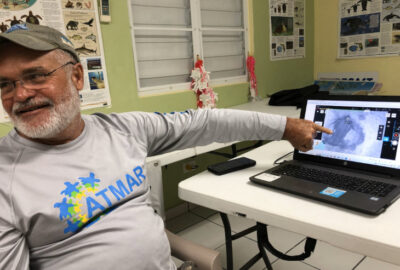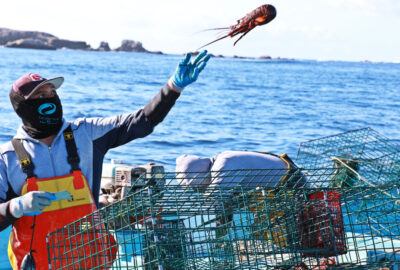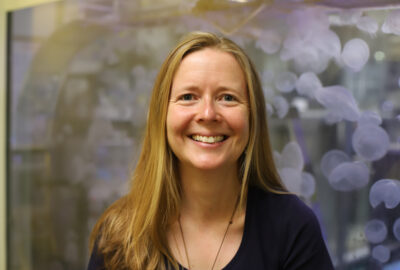Use of an Unmanned Aerial Vehicle (UAV-drone) to Monitor Sea Turtles on Nesting Beaches in Southeast Puerto Rico
By New England Aquarium on Wednesday, July 12, 2023


By Luis Crespo
Friends of the Sea Turtles, ATMAR Inc.
Community Organization, NGO
Maunabo, Puerto Rico
This post is one of a series on projects supported by the New England Aquarium’s Marine Conservation Action Fund (MCAF). Through MCAF, the Aquarium supports researchers, conservationists, and grassroots organizations around the world as they work to address the most challenging problems facing the ocean.
MCAF project leader Luis Crespo founded Amigos de las Tortugas Marinas. Amigos de las Tortugas Marinas- ATMAR (Friends of Sea Turtles) is a community-based, volunteer-run organization working to protect endangered sea turtles in southeast Puerto Rico.

Monitoring and census of sea turtle nests, night patrols to identify, and work with nesting turtles requires a lot of human effort that is exhausting and sometimes very expensive. Most monitoring methods used around the globe involve walking long distances in difficult, challenging, and often dangerous conditions.
In our organization, we have dedicated 23 years to protecting turtles from threats on the beach where they nest; poachers, feral animals, deforestation, coastal erosion, and light pollution, among others. We dedicate a lot of effort, and countless hours of long walks to remote beaches, to account for nesting activity and to tag females at night while they nest. We also collaborate and participate in research projects.
Traditionally we did everything on foot, particularly the night walks, and we also used an all-terrain vehicle (ATV). However, the ATV is a noisy option, expensive, requires a lot of maintenance, and can have negative impacts on the beach. So, it was necessary to look for another reliable alternative. Since we received the MCAF grant to purchase a drone (UAV) it has been a game changer for us. Monitoring with the drone is radically different than traditional monitoring techniques, with less impact and excellent results. We believe that we are making a difference through innovation and helping to pioneer the future of nesting beach monitoring.

Thanks to the grant from MCAF, we acquired a drone with a visible camera and an infrared camera, which allows us to fly it at night. Daytime flights allow us to monitor beaches without having to walk the entire beach, and with the drone is easy to monitor remote beaches. But it is at night that the drone is the most useful, efficient, and powerful tool. We can identify turtles nesting on the beach without the need for long walks all night. Once the turtle is detected, the team of volunteers moves quickly to the identified place to work with the turtle; place flippers tags, take morphometric measurements, and, if necessary, relocate the eggs.
With the drone, it has been possible to detect leatherback turtles more than 100 m away from the drone and about 2 km away from the place where the volunteers are based. We can detect the turtle coming out of the water or while it is crawling on the shore or determine in which stage of nest construction process that the turtle is in (e.g., making body pit, digging the egg chamber, depositing eggs, or covering the nest). Flying the drone at a low altitude, without disturbing the turtles, it has been possible to identify metal flippers tags, satellite transmitters, large scars, loss of a portion of the flippers, and even take the temperatures of the sand, the water, and the turtle.

The possible detection of poachers, mainly on remote beaches, is a bonus in acquiring the drone, although we have not encountered poachers yet. In the same way, introduced or feral animals that represent a threat can be detected both during the day and at night.
The drone has allowed us to take videos and night photos that are exceptional. In short, it is a cutting-edge technology that has greatly enhanced sea turtle conservation in Maunabo, Puerto Rico, and has a great potential to be used for sea turtle conservation projects worldwide.
/







